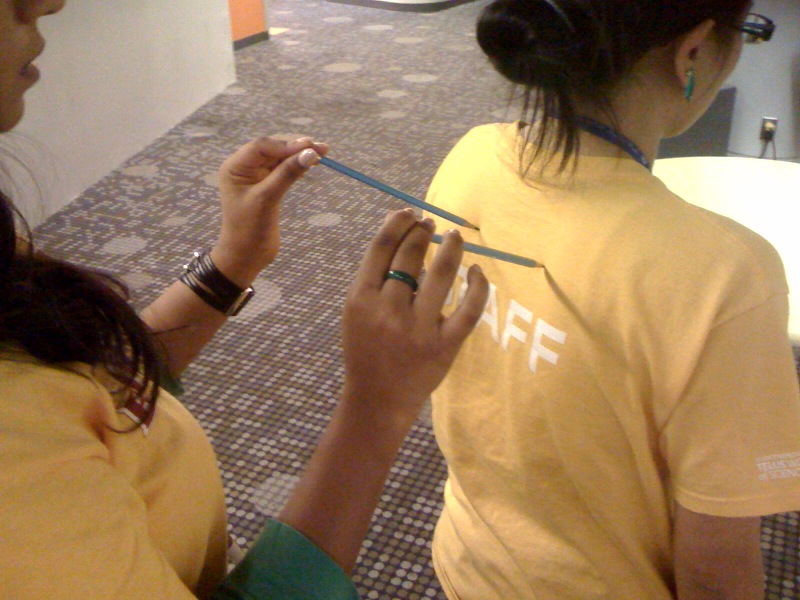In this activity, students use a pair of chopsticks to learn that the sense of touch is not restricted to their hands and that different parts of their body have different sensitivities.
The four senses of sight, hearing, smell, and taste are located in specific parts of the body.
The sense of touch is located throughout the body, in your largest organ, the skin. The sense of touch originatees in the bottom layer of your skin called the dermis.
The dermis is filled with many tiny nerve endings that give you information about the things your body is touching. Nerve endings do this by carrying the information to the spinal cord, which sends messages to the brain where the feeling is registered.
The nerve endings in your skin can tell you if something is hot or cold. They can also feel if something is hurting you. Your body has about twenty different types of nerve endings that all send messages to your brain. However, the most common receptors are heat, cold, pain, and pressure or touch receptors. Pain receptors are probably the most important for your safety because they can protect you by warning your brain that your body is hurt.
Some areas of the body are more sensitive than others because they have more nerve endings. It hurts when you bite your tongue because the sides of your tongue have a lot of nerve endings that are very sensitive to pain. Your tongue, however, is not as good at sensing hot or cold. That is why it is easy to burn your mouth when you eat something really hot. Your fingertips are also very sensitive. People who are blind use their fingertips to read Braille by feeling the patterns of raised dots on their paper.

